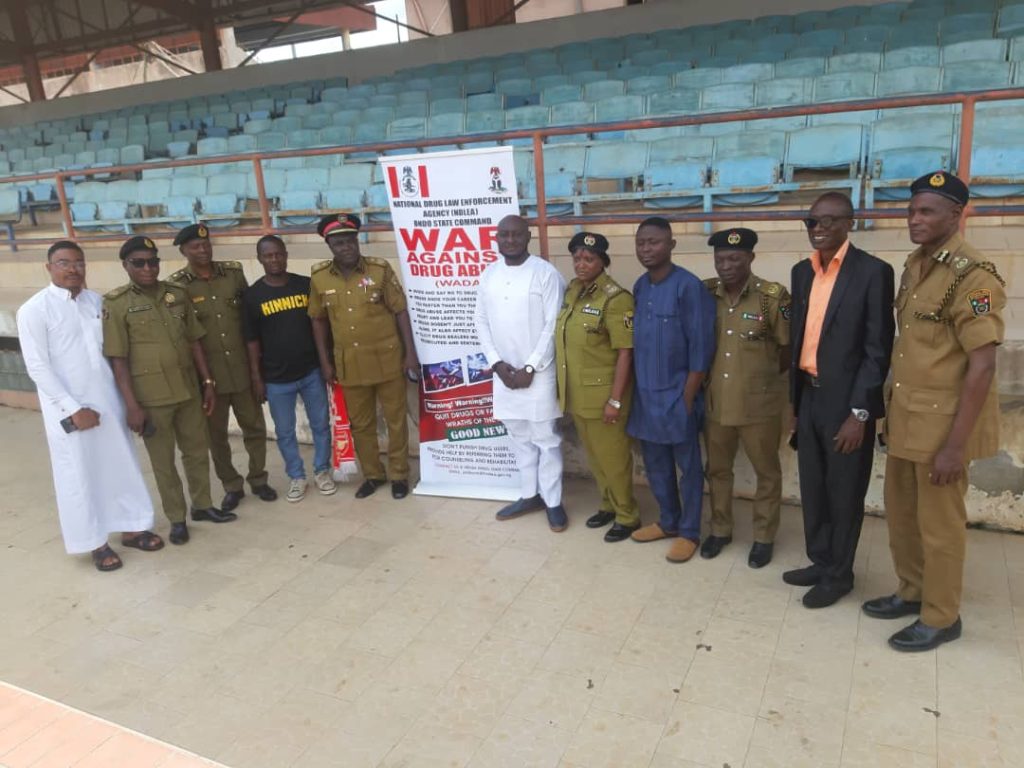Blood Tonic
Blood Tonic
By Dr. A.I. Irinoye
|
Blood consists of three substances mainly and these are suspended in the blood fluid. Blood is the reddish fluid that flows in our vessels. The three substances in blood are:
- Erythrocytes (Red cells) this form about 4 – 6xl012 per litre (4-6 million/ cu.mm.)
- Leucocytes (white cells) about 4 to 10×109 per litre (4-1(3 thousand /cu.mm.)
- Thrombocytes (platens) aboutl 50-400×107 litre.
(150-400 thousand/ cu.mm)
Haemoglobin is the blood protein and iron that reversibly binds oxygen and is contained in the red cells. The normal range for haemoglobin concentration is
Men: 13.5-18.0g/diorg/ 100ml. This can also be expressed in Packed Cell Vol- ume (PCV)PCV=40.5-54%.
Women: 11.5-16.4g/dlor g/lOOml. This can be expressed in PCV= 34.5 – 49.2%.
The blood fluid is called plasma, this is a yellow fluid which contains three groups of plasms proteins namely.
- Albumins – This help to control the passage of water from the plasms to the tissue fluids.
- Globulins – this constitute the antibody defences of the body against infection.
- Fibrinogen and Prothrombin, these are concerned with the coagulation ofblood.
The total body blood volume of a normal adult is about 4 litres out of which the plasma carries about 55 percent, red blood cells and while blood cells take 45 per cent while the platelets take an insignificant volume.
From conception up to the fifth month of foetal life, blood cells are formed both in the liver and the spleen. Thereafter, blood formation takes place increasingly in the medullary cavity of the bones. Blood cells have a limited life span and require to be continuously re
placed. The mature red blood cell is a circular disc, biconcave in shape to allow the cell considerable plasticity, enabling it to pass through the capillaries and other structures of smaller diameter. The red cell membrane is a complex structure through which water, potassium, and sodium ions, can pass by active processes the red cells membrance carries the blood group characteristics on its surface. The red blood cell has specific requirements for substances such as iron for haemoglobin formation. Blood formation is controlled : by a hormone called erythropoietin which is produced mainly in the kidneys.
The function of the red blood cells depends on their content of haemoglobin which is formed as the red cells mature in the bone marrow.
Functions of Blood
- Transport (a) Oxygen from the lungs to the tissues and caibon-dioxide from the tissues to the lungs, (b) Products of digestion are transported from the intestines to the tissues, (c) Hormones from the endocrine organs are transported to the tissues.
- Body defence against infection (a) Humoral. This is the action of immunoglobins acting as antibodies against infectious organisms (b) Cellular. The blood lymphocytes and neutrophils act as partners to destroy bacteria.
- Coagulation. The body has about 13 different coagulation factors in the blood which allows blood to clot when a blood vessel wall is damaged.
Formation of Blood cells: Red cells are formed in the bone marrow from nucleated cells called erythroblasts. The nucleus in the cells disappear before the cells enter the circulation. The newly released red cells are called reticulocytes. The proportion of this is low in the adult’s red cells but the proportion increases with increased bone marrow activity e.g. after a heavy blood loss.
Ingredients required for the formation and
maturation of red cells
l.Iron
- Folic acid
- VitaminB12
- Vitamin C
All the above are present in a normal balanced diet. Deficiency of one or more may occur if any of the following occurs.
- Abnormal diet
- Poor or deranged absorption
- Increase requirement as in pregnancy.
The red cells of normal size are called normocytes. In iron deficiency, the red cells are smaller than normal and are. Fig. 1. Shows the normal red blood cells formation stages in the bone marrow.
Fig.2. Shows the picture of iron deficiency anaemia on the red blood cells.
Fig. 3. Shows the blood picture of vitamin B12 and folic add deficiency. In folic acid or vitamin B12 deficiency
the red blood cells are larger than normal, this is the exact opposite of blood picture of iron deficiency anaemia.
Anaemia
This means a reduction in the haemoglobin concentration (red blood Cell volume) of the peripheral blood below ‘ the normal range (as stated above). This results in reduced capacity of the blood to transport oxygen to the tissues. When anaemia occurs, the red blood cells are usual but not always reduced in number.
/Anaemia may be classified into 3 main types.
- Iron deficiency .uiaemia
- Acute (recent) Needing
3 Vitamin Br deficiency.
Clinical features of anaemia and symptoms
1 Tiredness easily
Breathlessness on mild exertion.
- Palpitation (feeling of heart pounding).
- Giddiness.
Signs
- Looking pale (seen in the skin, mucosae and conjuncti- vae)
- Rapid’ heart beat (Normal heart beat for an adult is about 80 beats per minute.
- Mild Ankle Swelling.
Causes of Anaemia
- Deficient red blood cell production due to defidency of iron, folic acid, vitamin Bp or replacement of the bone marrow with malignant cells or secondary to seri-
ous illness e.g. Tuberculosis.
- Loss or destruction of red blood cells due to acute blood loss (haemorhage) or increased destruction of red blood cells as seen in sicklers.
Iron Deficiency Anaemia: Causes
- Dietary deficiency as in malnutrition.
- Bleeding e.g. from the intestinal tract.
- Pregnancy
- Worm infestation This produces hypochromic anaemia which is typified by smaller than normal red blood cells.
Folic acid and Vitamin Bn Deficiency
Common causes are:
- Poor diet, mainly diet lacking vegetables.
- Malabsorption syndrome.
- Pregnancy
- Surgery on the stomach. This causes macrocytic
anaemia typified by red blood cells bigger than normal.
Clinical features
- Slow onset of severe anaemia in middle age.
2 Skin shows yellowish tinge often with sore tongue.
Vitamin B12 can cause degeneration of the peripheral nerves of the body. This produces numbness and tingling sensation of the feet, weakness of the legs and incoordination. Sometimes these changes may develop earlier than the anaemia.
Mention must be made of other types of anaemias that can be caused by toxins, drug reactions, use of steroids etc.
The average life span of a red blood cell is 120 days, after which the cells dies and is broken down in circulation. When red bloods cell is broken down at a faster rate than the clearance rate, the spill over appears in the eyes as jaundice. It must be stated that the deformed red blood. cells e.g. sickle -cell anaemia dies faster than the normal red blood cells.
Anaemia is the decrease in the total mass of red cells in the blood, the opposite of this is polycythaemia which is an increase in the total mass of red blood cells in the blood.
Polycythaemia may be cause by reduced oxygen intake due to whatever cause as seen in people living in montainous areas.
Another important component of blood is the white blood cells. In a healthy adult about 70 per cent of the circulating white cells are granulocytes and 30 percent are Lymphocytes. The granulocytes are the soldiers of the body, they kill and ingest bacteria entering the body. The hympthocytes produce antibodies and cooperate with the granulocytes in the fight and defence of the body against infection. The worn- out blood cells white or red are destroyed in the spleen. This is an organ that lies to the left of the upper abdomen, protected by the lower ribs. It is not normally felt by touching the abdomen but when it is hyperactive as in massive red blood cell destruction it becomes grossly enlarged.
Herbal Blood Tonic
- Ewedu- Yoruba.
This can be washed and squeezed in little water, this can be taken raw daily. It is noted for enriching and replenishing iron in the body , it is very useful for pregnant women.
- Efirin- Yoruba
Lamiaceae – botanical name Iyeke- Urhob. Common. name-Ocinum.
The ones with small leaves Efirin wewe is very good for the body. It can be taken raw and as stimulating spices in food and soup. It can be used with hot water as tea in the morning.
- Amiye, Arunje, Aroje- Yoruba, common-name – Dragon’s Blood Tree, Harungana species -Botanical name. The leaves and bark of stem are used for the treatment of anaemia.
- Ugu-Igbo, Apiroko- Yoruba.
This is a very popular vegetable herb in this country. Is’ It is found in the rain forest area.lt is a climbing plant. It is very rich in iron and mineral salts which is much needed by the growing body. It is best taken raw after washing. This can be squeezed with a little water and taken as tea, a little honey may be added to taste. Boiling rapidly destroys the usefulness of this plant.
- Poporo Oka Baba- Yoruba. This is the reddish tail end of the guinea com plant.
This is washed and cut into small pieces and a little water added to just cover it in a pot. This is boiled for about one hour allowed to cool and taken regularly say I glass once or twice daily.
- Cocoa leaves. This is the reddish brown shed leaves of the natural indigenous plant. Pick and wash the leaves, soak in a clean eathemware pot add water to cover the leaves and boil for one hour allow to cool over night.
Dose 200mls (one, glass) twice daily for moderate anaemia and once daily for mild anaemia.










